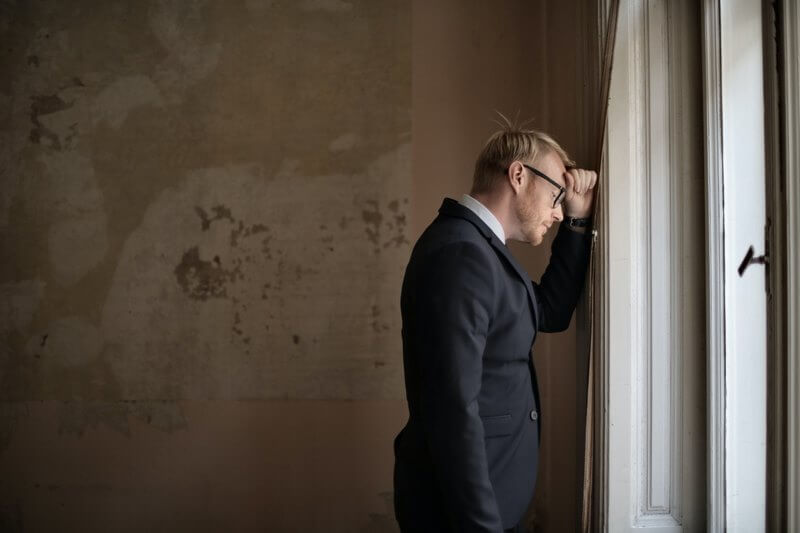
Success or failure aligned with leadership
How well people in leadership roles are reacting to the pandemic is already being debated. Having effective COVID-19 crisis response leadership is vital. As part of the debrief on what went well and what did not, it is natural to look at how well leaders did. As many of you know, management sets the tone during a crisis. The approach taken can significantly influence the view of your company. As I talked about in my blog on Reputation Management After A Crisis Event, it is challenging to recover from bad optics in crisis response.
It is far better to lead from the front with management that puts customers and employees first. Secondarily, leadership should commit to keeping critical services or products available. Once you lay this foundation, all other decisions flow from there. This commitment to these values will serve your company well.
However, it can take a great deal of effort and finesse as a disaster professional to keep your top managers engaged in achieving these goals. Understandably, the longer an event goes on, the more they are subject to various pressure points. Not only will they be working to maintain daily operations and to achieve financial targets, but they will also be striving to support their teams during increasingly abnormal circumstances. By this, I mean that no matter how well your organization prepares, a prolonged response phase challenges everyone.

Don't become complacent
It can be hard to continue to operate at an emergency level and not become complacent. The risk here is that people get sloppy, wanting to return to former ways of working. This outdated mentality can expose your business to unnecessary risk. To minimize this, you need to urge your leadership to lead from the front, be real and transparent. Senior leaders need to commit to ongoing communication that is authentic and displays compassion. Managers need to help employees understand that things will not go back to exactly how they were pre-pandemic.
An invaluable technique to keep senior management focused is to use a command structure. It is helpful to designate a chain of command of who is responsible for decision-making and at what level. For example, hosting a daily or weekly meeting of the top leaders is useful. This format allows you to get dedicated time to provide updates, discuss problems, and recommend solutions. Cascading down from this ensures that the crisis response gets tailored to support the needs of different business units.

Flexiblity in decision-making
By creating a central nexus of crisis response operations, you also want to encourage leadership to put a flexible structure in place. For example, the crisis management team pre-COVID-19 likely does not look like the one you have now—the ability to pivot quickly to changing circumstances and not being rigid in serve you well.
Meaning, the framework you started with to address the pandemic should not be the same. I recently experienced a situation where leadership ultimately chooses to go with a different option when faced with reliable recommendations. This approach demonstrated that although they have faith in their team, they are willing to make hard decisions and consider alternative options.
As we are no longer in the initial phase of the disaster event, leadership is now progressing towards the response phase. Aligned with this, team membership and focus are changing. Some of you are already in de-escalation and bringing employees back into offices. Other companies have already adopted a new normal paradigm. Regardless, this pandemic is not over globally, and the constant risk of re-escalation due to future impacts is real. Until it is over, we will all need to be ready to make informed decisions and adjust quickly to changing circumstances. You will need to urge management to adopt a flexible mindset to adapt to ever-changing conditions.

The importance of media and benchmarking
Gathering intel to understand how others are reacting to the crisis event is golden. You know the importance of reviewing metrics and being knowledgeable of how others are handling emergencies. However, more than others, this event has shown me that there is a desire to be in sync with external recommendations and peers’ actions.
As much as we rely on data for any significant decisions, having access to information takes on more considerable significance when trying to determine what steps to take next. The company I work for relies heavily on actuarial, financial, and benchmarking data. So, you can only imagine the reliance on these tools when reacting to a crisis event or attempting to make choices that affect the future solvency of the company. More than any other crisis to date, I have witnessed how gathering real-time data is critical to mapping out future actions during this pandemic.
Top of mind for all of us is the wellness of customers, employees, and partners. After this is a desire to understand how other companies are approaching milestone decisions (i.e., who and when do we allow employees to return to offices?). I have been fortunate to participate in several channels that have exposed me to the approaches companies are taking and why—understanding the why is vital.
Continuing to reevaluate is helpful because even though we may be in the same industry, companies’ market focus or geographic spread may produce different outcomes. This frequent benchmarking has allowed me to share this knowledge internally and explain why another business makes sense for them but sometimes not for us. Regardless, I have found that the networking and connections made pre-pandemic are invaluable assets. So, a keep aspect of this response is to nurture and access your networks!

Creating and maintaining your teams
Don’t forget to both care for and empower your teams. Along with flexibility and fluidity, it is essential to rely upon your crisis team. I have noticed that while some groups have remained intact, other organizations or new ones were added because of specific needs related to this event. For me, this is positive and speaks the importance of flexibility I addressed earlier.
Not only do you need to leverage your existing structure, like an Incident Command System (ICS), but you need to be adaptable enough to expand, collapse, or change your response to the evolving needs. My experience is that although the ICS framework is generally good, it does not always serve most corporations well. Although many organizations have adopted this emergency management-based model, I found that it does not mesh well with the leadership structure. Making a statement like this makes be off-putting for some, but I have witnessed that the model does not resonate.
It is far better to align with the management’s daily operating structure to be effective. However, the rudiments of ICS do have value. For example, it is imperative to have a senior decision-making body with clear lines of authority and coordination throughout the enterprise. These coordinating teams need to be agile and serve as champions back to their areas of the preview. The working groups are a clearinghouse for decision-making and their execution. At the site or local level, the crisis teams should consist of the engaged operationally (ex. site administrator, facilities, security, legal, hr, etc.).

Working with internal and external experts
To create a successful and sustained crisis response structure, you have to adopt a healthy leadership posture. Although you exist to serve the organization and report to senior leadership, the business looks to the lead crisis team for guidance. As a crisis leader, you direct coordination by having the right players at the table. You are not responsible for making all of the choices but for offering your expert opinion and successfully executing them.
Adopting continuous improvement by regularly meeting with stakeholders and leadership to gain buy-in is key to an effective response. Taking this approach will enable you to address issues early on and continually make course corrections towards success. Maintaining senior leadership confidence is vital, along with your partners–both internal and external. With Covid-19, I have witnessed the unprecedented global importance of working directly with employees, third-party vendors, and customers.
To do this, I recommend leveraging both internal and external experts. My crisis response toolkit has always included engaging with a medical consultant for infectious disease outbreaks. For this event, the necessity of partnering with someone with global expertise has been precious. Additionally, leveraging members of the crisis team with in-depth knowledge of their business and local markets provided superior intel for real-time decision-making. Finally, I have rarely seen internal expertise leveraged to such a degree, and it has made all of the difference to how well we have handled the pandemic.

Final thoughts on leadership for the COVID-19 response
The pandemic is unprecedented for other recent events by its global impact. Although H1N1, SARS, Ebola, and other health disasters were highly impactful, this virus is genuinely worldwide. We do not yet understand the long-term impacts of this pandemic. What I can say is that I am humbled and amazed daily at the cooperative nature and can-do attitude of the leaders around me. It highlights what we do right in this field. However, we can’t rest on our laurels as this event appears to have a long tail ahead. Executives need to continue to look forward while communicating honestly with empathy and demonstrate continued crisis response leadership.
A good leader should be in the trenches with their teams but should trust their employees’ expertise and guidance. Management can inspire confidence by allowing crisis teams independence as needed, but leaders should step up to make tough decisions. By relying on their teams, leveraging critical data, having an open dialogue with their employee and customers, I am confident leadership will execute on successful crisis response.
